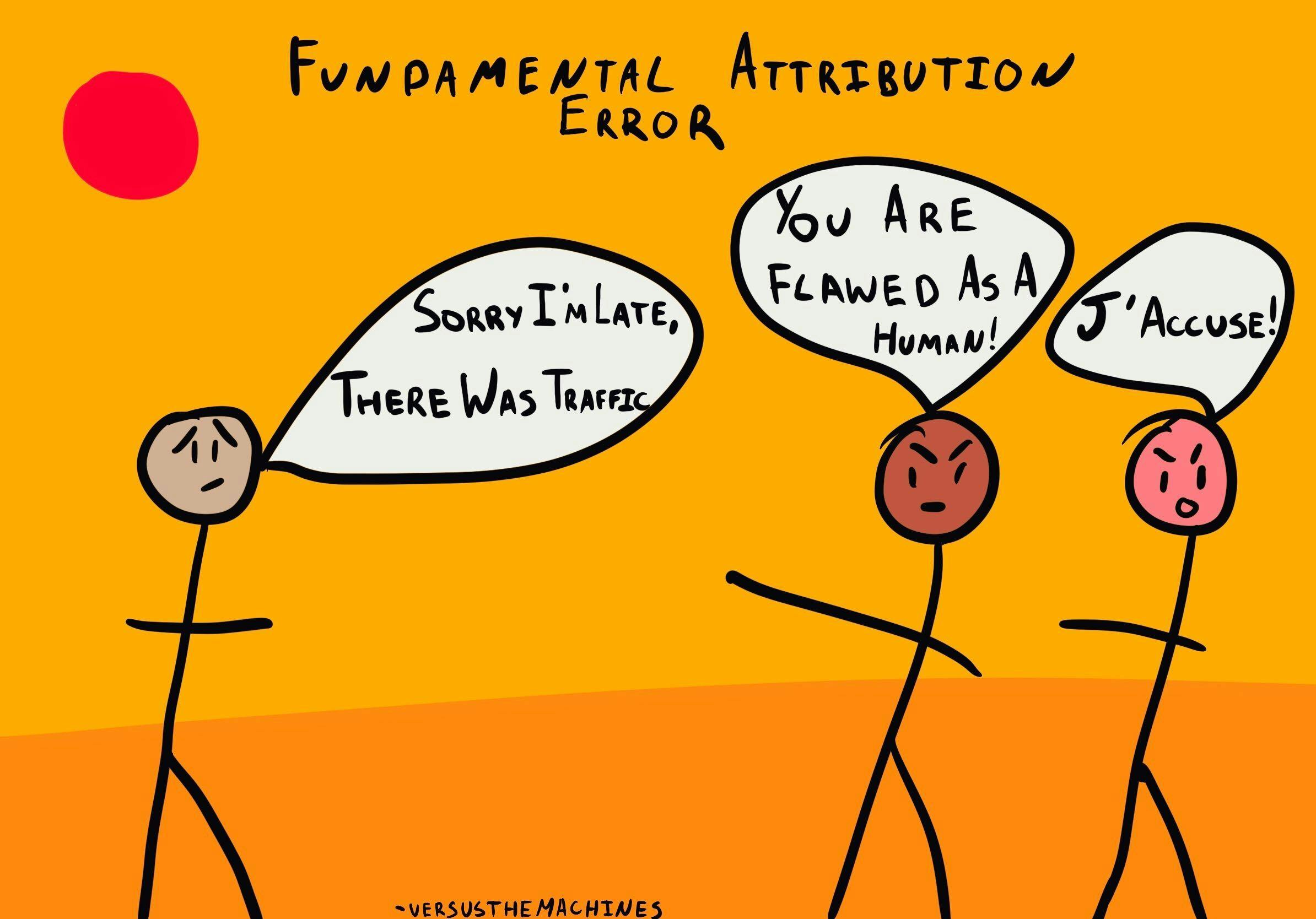Why do we underestimate the influence of the situation on people’s behavior?
Fundamental Attribution Error
, explained.What is the fundamental attribution error?
The fundamental attribution error (FAE) describes how, when making judgments about people’s behavior, we often overemphasize dispositional factors and downplay situational ones.5 In other words, we believe that people’s personality traits have more influence on their actions, compared to the other factors outside of their control.

Where this bias occurs
Let’s say you’re driving to work one day, and somebody cuts you off. Furious, you decide that the other driver is a selfish person, who doesn’t care about other people’s safety. Unbeknownst to you, the other driver rarely cuts people off, and normally they are very careful about safety—but right now, they’re on the way to a hospital for a family emergency, so they’re acting differently than they usually would.
The fundamental attribution error causes us to make fast, and often incorrect, assumptions about others without taking into account that there may be another reason for the observed behavior. It often occurs in situations where we know little information as we attribute people’s behavior to situational or dispositional factors.














